Apple Personal LaserWriter SC, Personal LaserWriter NT, Personal LaserWriter NTR, Personal LaserWriter LS, Personal LaserWriter LS-L Service manual
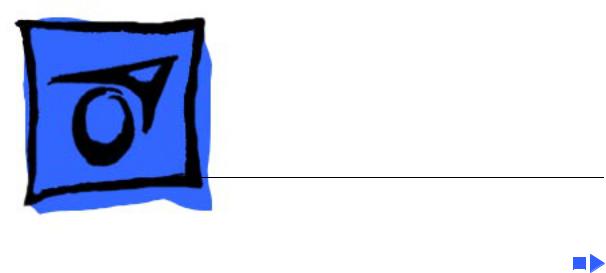
K Service Source
PLW SC/NT/NTR/LS
Personal LaserWriter SC, Personal LaserWriter NT,
Personal LaserWriter NTR, Personal LaserWriter LS,
Personal LaserWriter LS/L

K Service Source
Basics
PLW SC/NT/NTR/LS

 Basics Product Information - 1
Basics Product Information - 1
Product Information
The printers covered in this manual are
• Personal LaserWriter SC
• Personal LaserWriter NT
• Personal LaserWriter NTR
• Personal LaserWriter LS
• Personal LaserWriter LS/L
Compatibility
Not all parts are compatible among the five models. Refer to Illustrated Parts for compatibility cross references.
The cassette feeder tray and its associated parts are optional on the LS, LS/L, and NTR models.

Basics |
Paper Paths - 2 |
|
|
Paper Paths
There are four paper paths in the Personal LaserWriter. Paper is fed from the cassette or multipurpose tray and delivered to the face-down or face-up delivery trays.
Note: Face signifies image side. Default delivery is facedown at the top of the printer.

Basics |
LS–LS/L Identification - 3 |
|
|
I/O Board Bracket
Power Switch
Personal LaserWriter LS
Solid Rear Cover
LS–LS/L Identification
The LS/L is a cost-reduced version of the LS but is sold and packaged under the same LS name. Parts are not necessarily interchangeable between the two models.
External distinguishing characteristics:
• LS: The power switch is on the left rear of printer; the rear cover has an opening for an I/O board bracket and displays the family number M2000.
• LS/L: The power switch is on the right rear of printer; the rear cover is solid plastic and displays the family number M2002.
Power Switch
Personal LaserWriter LS/L
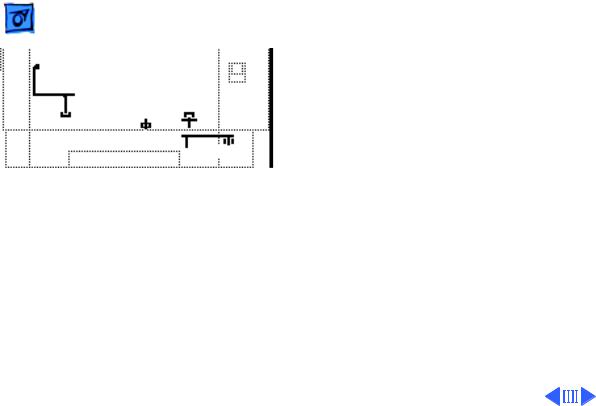
Basics |
Sensing System Theory - 4 |
|
|
PS12 PS11
PS502
PS501
PS13 PS901
Sensing System Theory
There are six sensors in the Personal LaserWriter: four paper sensors and two printer-open sensors. Each consists of an actuator, a U- shaped photo interrupter, and circuitry that communicates with the controller.
If the actuator is present inside the U, the circuit closes; if it is absent, the circuit opens. In ready state the appropriate circuit is closed.
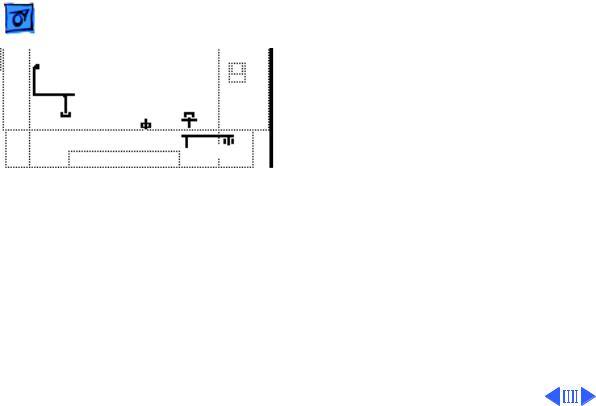
Basics |
Sensing System Theory - 5 |
|
|
PS12 PS11
PS502
PS501
PS13 PS901
Paper sensors are actuated as an arm or lever swings against movement of paper. Printer-open sensors are actuated as the user shuts a door or cover.
Illustrations on the following cards show each sensor as it would appear in print ready state. Some peripheral elements are deleted for clarity.

PLW SC/NT/NTR/LS |
Basics - 6 |
|
|
|
|
Actuator Tab on
Toner Cartridge
Photo Interrupter
PS11
Toner Cartridge Sensor
Actuator: Toner cartridge shutter flips into position as front door closes.

PLW SC/NT/NTR/LS |
Basics - 7 |
|
|
|
|
Photo
Interrupter
PS12
Delivery Unit Paper Sensor
Actuator: Sensing lever housed in fuser Paper-Sensing Lever assembly is tripped by paper exiting fuser.
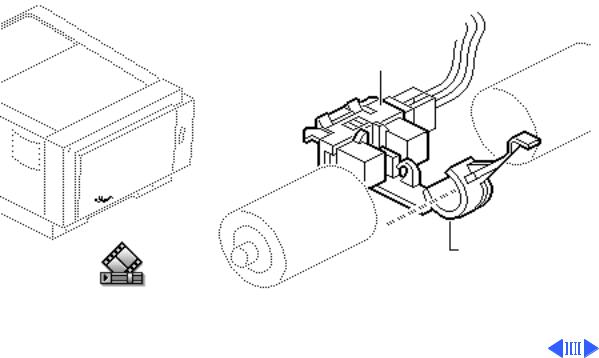
PLW SC/NT/NTR/LS |
Basics - 8 |
|
|
|
|
Photo
Interrupter
Paper-Sensing Lever
PS13
Pickup Unit Paper Sensor
Actuator: Sensing lever in feeder assembly is tripped by paper entering feed cycle.
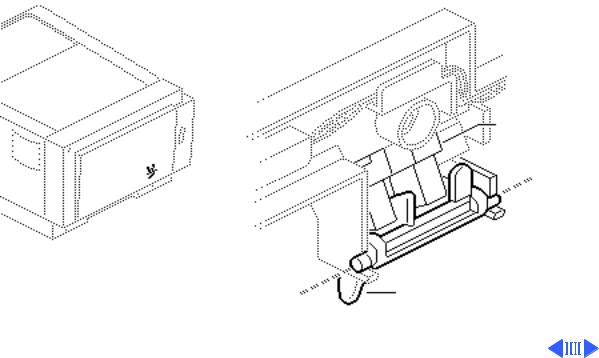
PLW SC/NT/NTR/LS |
Basics - 9 |
|
|
|
|
PS501
Multipurpose Tray Sensor
Actuator: Sensing lever in multipurpose cable assembly is tripped by manually fed paper.
Photo
Interrupter
Paper-Sensing Lever (Shown in tripped position)
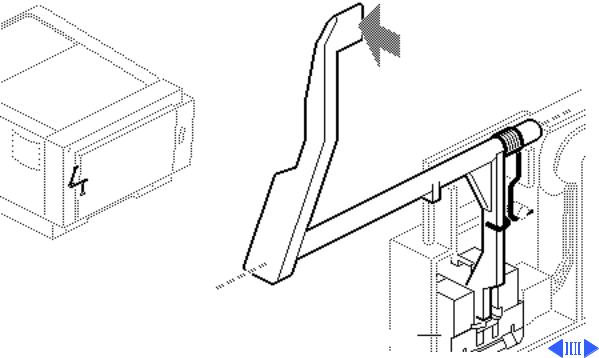
PLW SC/NT/NTR/LS |
Basics - 10 |
|
|
|
|
PS502
Face-Up Cover Sensor
Actuator: Sensing arm is tripped by the closing of the face-up ocver.
Cover
Sensing
Arm
Photo Interrupter
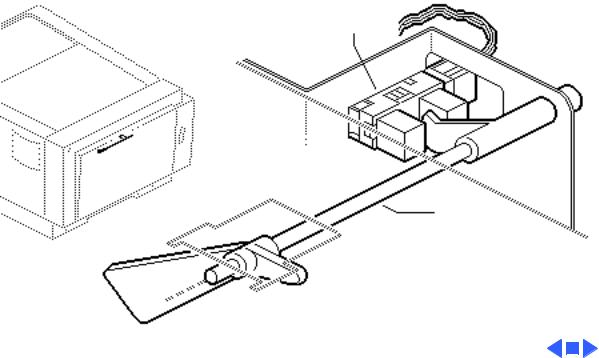
PLW SC/NT/NTR/LS |
Basics - 11 |
|
|
|
|
Photo
Interrupter
Paper-
Sensing Arm
PS901
Paper Cassette Sensor
Actuator: Sensing arm is tripped by the insertion of loaded cassette tray.

Basics |
Startup Test Pages - 12 |
|
|
Startup Test Pages
The Personal LaserWriter SC, NT, and NTR generate a startup test page 2 – 3 minutes after you switch on the printer. The LS and LS/ L do not produce such a page.
In the NT and NTR the startup test page also shows unit-specific configuration information. The following pages describe each element of the startup test pages.

PLW SC/NT/NTR/LS |
Basics - 13 |
|
|
|
|
Printer Name
I/O Board
Type
NT/NTR Startup Test Page
Communication Protocol
RS-232 serial or AppleTalk
Fonts in ROM
Installed RAM
Version of ROM installed
Number of pages the I/O board has produced
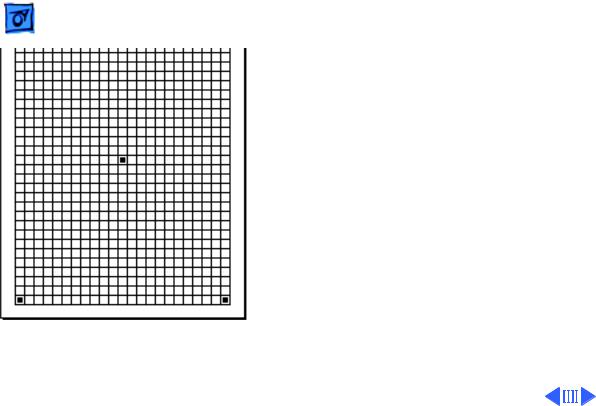
Basics |
Startup Test Pages - 14 |
|
|
|
The Personal LaserWriter |
|
SC test page consists of a line |
|
matrix. The printer |
|
generates a test page only if |
|
you set its SCSI address to 7 |
|
prior to switching on the |
|
printer. It continues to |
|
print until it is out of paper. |
|
Note: Be sure to set the SCSI |
|
address back before |
|
resuming printing. |
SC Startup Test Page

Basics |
Service Test Page - 15 |
|
|
Service Test Page
Successful printing of a service test page confirms print engine operation.
There are three variations in how you run a service test page, depending on the model you are servicing. Each involves using a pencil or similar dowel-shaped tool to depress the service test button on the DC controller board (or serial controller on the LS/L).
Service Test Page
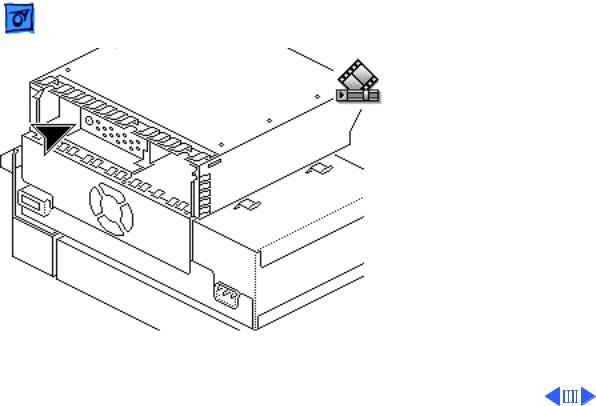
Basics |
Service Test Page - 16 |
|
|
SC, NT, NTR
First remove the I/O board. You can then access the test button through the 1/4- inch diameter opening in the I/O shield.
SC, NT, NTR
Service Test Page
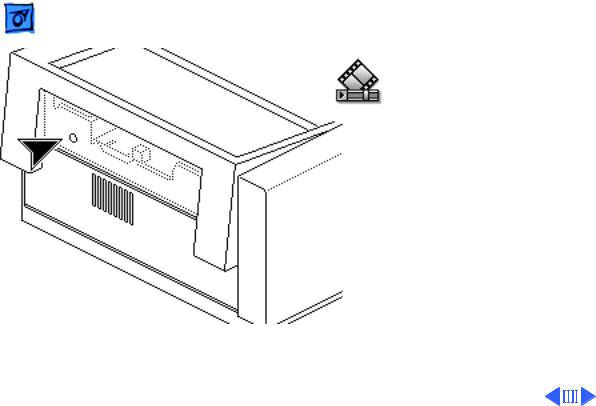
Basics |
Service Test Page - 17 |
|
|
LS
First remove the I/O board bracket. You can then access the test button through the 1/4-inch diameter opening in the end plate.
LS
Service Test Page
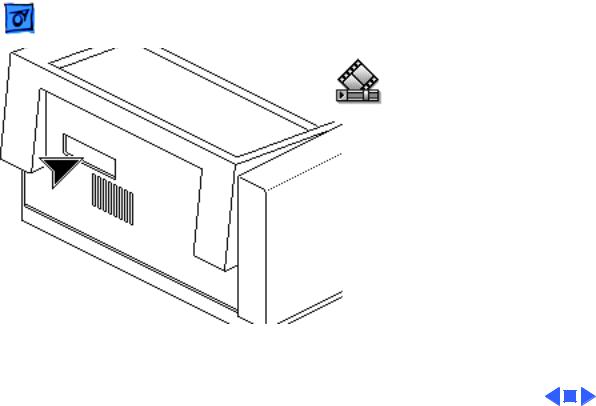
Basics |
Service Test Page - 18 |
|
|
LS/L
First remove the test button cover on the rear panel of the printer. You can then access the test button through the opening in the rear panel.
LS/L
Service Test Page

K Service Source
Specifications
PLW SC/NT/NTR/LS
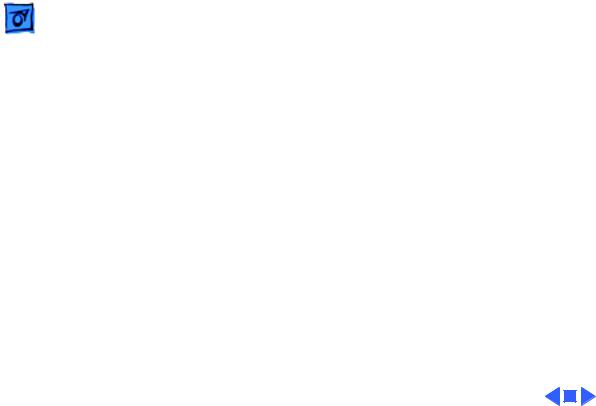
Specifications |
General - 1 |
|
|
|
|
Engine
Printing Method
Optical System
Resolution
Imaging Languages
Supported
General
Canon P110 engine
Electrophotography using single-component dry toner Semiconductor laser and a rotating dual-faced scanning mirror 300 dpi
SC: QuickDraw
NT: PostScript, HP LaserJet Plus, and a subset of Diablo 630 NTR: PostScript, HP LaserJet Plus, and a subset of Diablo 630 LS: QuickDraw
LS/L: QuickDraw
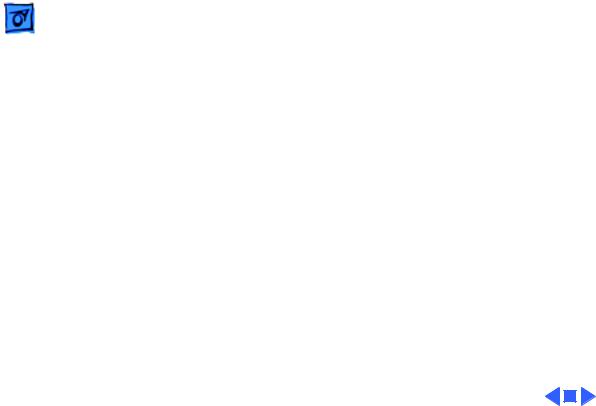
Specifications |
Intro Dates - 2 |
|
|
|
|
Intro Dates
SC and NT
LS
LS/L and NTR
July 1990
March 1991
March 1992
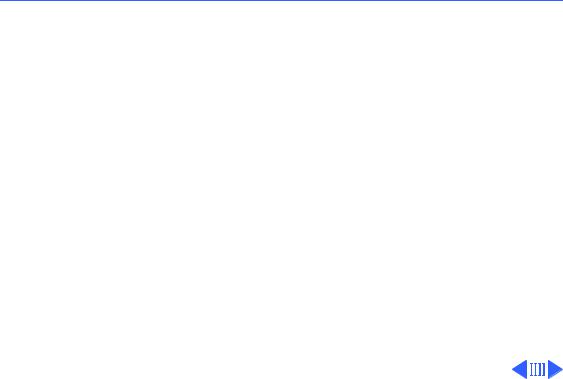
 Specifications Logic Board - 3
Specifications Logic Board - 3
|
Logic Board |
CPU |
SC: Motorola 68000 microprocessor (7.275 MHz) |
|
NT: Motorola 68000 microprocessor (12 MHz) |
|
NTR: N/A |
|
LS: N/A |
|
LS/L: N/A |
DRAM |
SC: 1 MB |
|
NT: 2 MB, expandable to 8 MB |
|
NTR: 3 MB, expandable to 4 MB |
|
LS: 512K, expandable to 1 MB |
|
LS/L: 512K, expandable to 1 MB |

|
Specifications |
|
Logic Board - 4 |
|||
|
|
|
|
|
||
ROM |
SC: |
32K |
||||
|
|
NT: |
1.25 MB |
|||
|
|
NTR: 3 MB |
||||
|
|
LS: N/A |
||||
|
|
LS/L: N/A |
||||
I/O |
SC: SCSI |
|||||
|
|
NT: LocalTalk, RS-232, RS-422 |
||||
|
|
NTR: LocalTalk, RS-232, RS-422, Centronics parallel |
||||
|
|
LS: RS-422 |
||||
|
|
LS/L: RS-422 |
||||
|
|
|
|
|
|
|
|
|
|
|
|
|
|
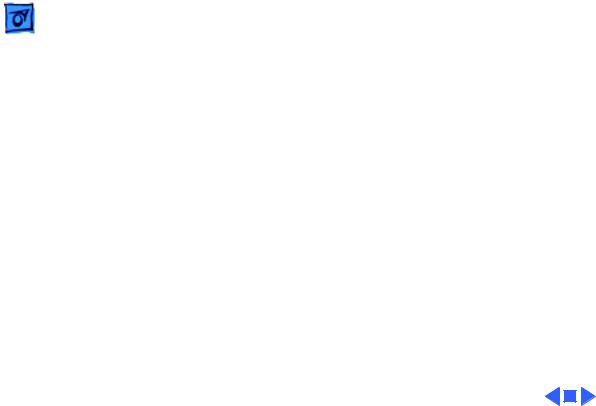
Specifications |
Performance - 5 |
|
|
|
|
Printing Speed
Print Delivery
Life Expectancy
Performance
4 pages per minute maximum; actual performance depends on the application
Face-down or face-up (manually selectable)
150,000 pages with no monthly page limit
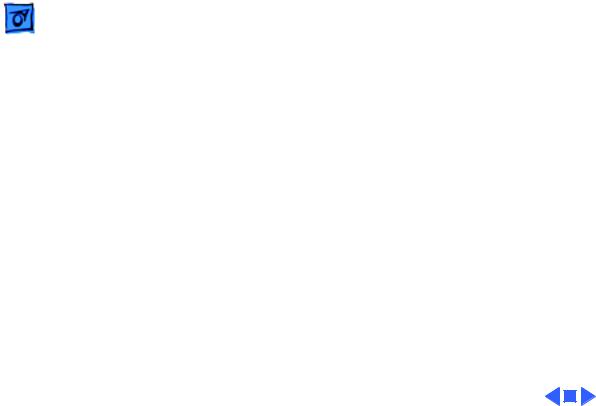
Specifications |
Paper - 6 |
|
|
|
|
Paper Weights
Cassette Sizes
Capacity In
Paper
Cassette feed: 20 lb., single-sheet, photocopy bond
Manual feed: 20-28 lb., letterhead and colored stock, mediumweight transparency material, envelopes, and labels
US letter standard; legal, A4, B5, and envelope cassettes optional
Cassette: 250 sheets
Manual: 50/70 sheet capacities
Envelope cassette: 15 envelopes, minimum size 86 x 178 mm (3.5 x 7 in.), maximum size 188 x 267 mm (7.4 x 10 in.)
Capacity Out
Face-down tray: 50 sheets Face-up tray: 20 sheets
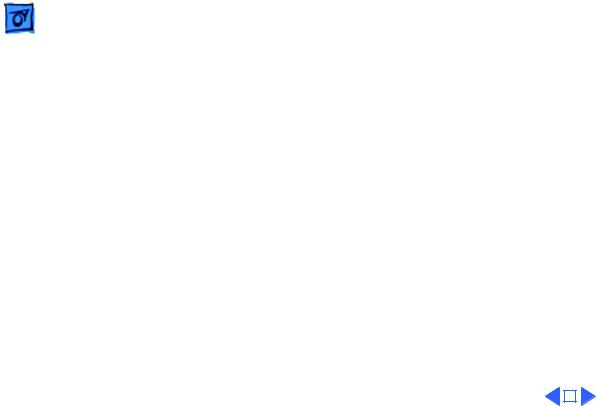
Specifications |
Built-In Fonts - 7 |
|
|
|
|
Built-In Fonts
SC, LS, and LS/L
NT
N/A
Times, Helvetica, Helvetica Narrow, Courier, Symbol, Palatino, ITC Avant Garde, Gothic, ITC Bookman, New Century Schoolbook, ITC Zapf Chancery, and ITC Zapf Dingbats
NTR |
Times, Helvetica, Helvetica Narrow, Courier, Symbol, Palatino, |
||
|
ITC Avant Garde, Gothic, ITC Bookman, New Century |
||
|
Schoolbook, ITC Zapf Chancery, ITC Zapf Dingbats, and IBM PC |
||
|
Graphics Extended Character Set (ECS) |
||
|
|
|
|
|
|
|
|
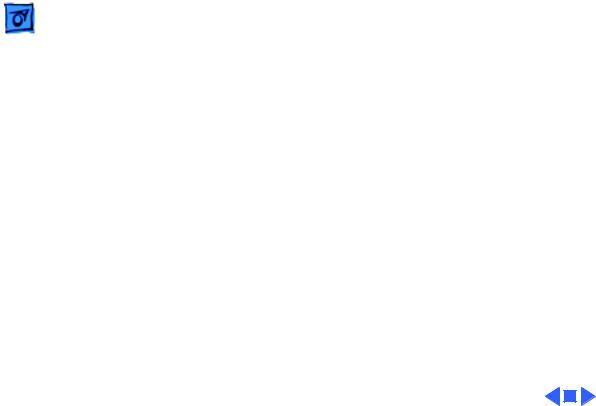
Specifications |
Environmental - 8 |
|
|
|
|
Environmental
Temperature
Humidity
Noise Level
50-90.5° F (10-32.5° C)
20-80% relative humidity
Printing: Under 53 dB(A)
Standby: Under 43 dB(A)
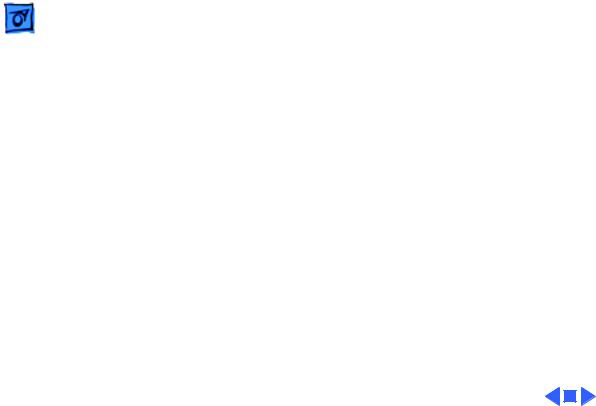
Specifications |
Electrical - 9 |
|
|
|
|
Line Voltage
Power Consumption
Electrical
US/Japan: 100/115 V, 50/60 Hz
Europe/Australia: 220/240 V, 50 Hz
600 W maximum (100/115 V)
550 W maximum (220/240 V)
